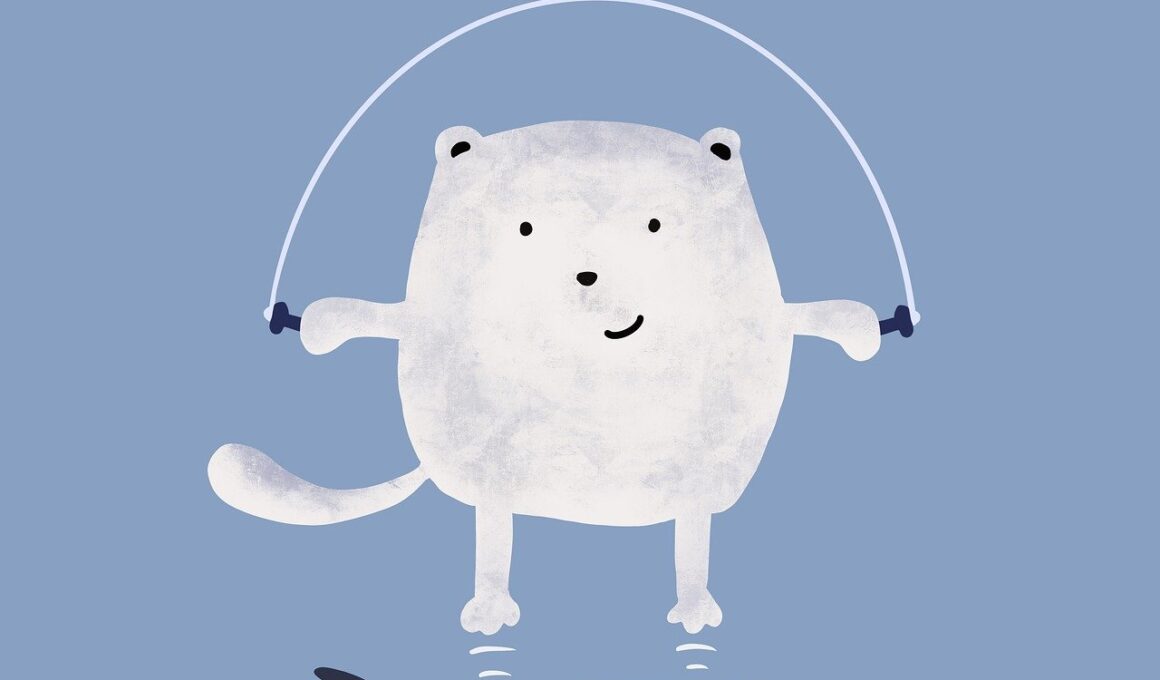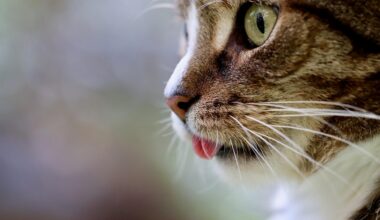Understanding Cat Personalities in Sports Training
When engaging in cat sports training, understanding individual cat personalities is paramount. Each cat possesses unique traits that affect its responsiveness to training methods. For instance, some cats are naturally assertive and require a robust training routine to harness their energy. Others might be more timid, needing an approach that encourages confidence rather than intimidation. The diversity in smarts, playfulness, and anxiety levels among cats necessitates flexibility in training strategies. Furthermore, recognizing these temperamental variations shapes a positive experience for both trainer and cat. Strategies such as positive reinforcement and rewarding specific behaviors can greatly improve results. Always ensure you observe your cat’s reactions, adjusting methods as needed based on their comfort levels. Creating a tailored training plan ensures effectiveness, reducing potential stress for the feline athlete. This approach not only defines success in skill acquisition but also strengthens the emotional bond between pet and owner. The right mix of patience and understanding can lead to incredible achievements in training while cultivating teamwork with your feline friend. Therefore, assessing personality types should be the first step when embarking on any cat sports journey.
Once you have identified the distinct personality traits of your cat, the next step is adapting your training approach to suit these characteristics. For the more sociable cats, you might want to incorporate group training sessions, fostering a playful learning environment. These sessions can enhance social skills and encourage healthy competition, as well as keep the cats engaged for longer periods. Conversely, solitary cats may benefit more from one-on-one sessions, where you can provide undivided attention. Utilizing toys that match their personalities can significantly boost training effectiveness as well. For instance, interactive toys may attract playful cats, ensuring they remain motivated during training. On the other hand, shy cats might respond better to quieter, more focused activities that require less stimulation but still encourage participation. Understanding your cat’s mood can further help adjust training times to when they are most receptive. It’s also crucial to progress at a pace that feels comfortable for your cat, allowing them to build up their confidence gradually. Alternating between different training techniques can also help maintain interest and engagement in cats that are easily distracted.
Dealing with Behavioral Challenges
Behavioral challenges may arise during cat sports training, which can hinder progress. Some cats may exhibit signs of anxiety, fear, or even aggression when faced with unfamiliar training techniques or environments. To mitigate these challenges, it’s essential to create a positive association with the training space. Start by introducing your cat gradually to the area, allowing them to explore without any pressure. Gradual desensitization methods can help your cat feel more secure, building their ability to cope with the surrounding stimuli during training. Positive reinforcement plays a crucial role in addressing behavioral issues. Rewarding your cat for small achievements reduces anxiety and encourages them to engage with the activities. Similarly, breaking training sessions into shorter segments can prevent overwhelming your feline friend. Always observe their body language, adjusting your tactics if you notice signs of stress or discomfort. Consistency is key; repeated exposure to the training environment in a positive way can gradually help in overcoming behavioral hurdles. Moreover, seeking advice from a veterinarian or a cat behavior expert can provide additional tips and insights tailored to your cat’s specific needs.
In cat sports training, motivation remains a fundamental aspect for a successful learning experience. Cats, unlike dogs, often need unique motivators to incentivize them. Identifying what your cat finds stimulating can drastically change the course of training sessions. This can range from favorite treats to engaging toys or even praise and affection. When employing rewards, opt for highly appealing treats that are not available during regular feeding times, making them feel special. Additionally, using toys that mimic prey can significantly activate a cat’s hunting instincts, allowing for better focus during practice. Setting clear goals can also enhance motivation, as cats thrive with a sense of achievement. For instance, breaking down tasks into manageable segments can prevent frustration while ensuring a steady pace of learning. Always acknowledge efforts, whether successful or not, to foster a loving training atmosphere. Engaging in regular, even brief, practice sessions is advisable, allowing your cat to internalize skills without leading to burnout. Varying routines to include elements that excite your cat will also bolster their enthusiasm, keeping training fresh, fun, and highly rewarding both for you and your cat.
Health Considerations in Training
Keeping health considerations in mind while training your cat for sports is crucial to ensure longevity and performance. Regular veterinary check-ups are essential to identify any underlying health issues that could impact your cat’s ability to participate actively in training. Cats may conceal discomfort or pain, making it vital to observe any changes in behavior, eating habits, or energy levels. Ensuring your cat maintains an appropriate weight will enhance their agility and performance. A balanced diet tailored to their specific training needs will help in achieving optimal results. Adequate hydration should always be prioritized, particularly during tough training sessions where heat stress can be a concern. Taking breaks during training can help prevent injuries, especially in more active or intense sessions. If an injury occurs, allowing sufficient recovery time is critical to avoid long-term consequences. Keeping mental health in check is equally important; overly strenuous training can lead to anxiety or aggression. Thus, providing a supportive environment, free from undue pressure, fosters a healthier attitude towards training, enhancing both performance and overall well-being.
Furthermore, incorporating variety and play into your cat’s training regimen can sustain their interest while promoting healthy physical activity. Rotate between several sports activities, such as agility courses or lure coursing, to keep sessions dynamic and exciting. This keeps cats engaged and allows them to use different skills and muscles, contributing to their overall fitness. Objective measures of progress can also help maintain momentum. Recording achievements or milestones will foster a sense of accomplishment and motivate both you and your cat to continue. Consider using a journal or a tracking app to log performance improvements and areas that may require additional focus or practice. Utilizing technology like video can also provide insights into your cat’s training style and performance, revealing areas for skill enhancement. Keeping the atmosphere light and playful during practice helps mitigate stress for both the trainer and the cat. A positive and supportive training environment encourages open exploration and playful interaction, ultimately leading to a stronger bond. Ensuring that training sessions remain enjoyable and rewarding for cats creates lasting love and commitment towards sports activities.
Conclusion: Tailoring Training for Success
Adapting training methods for different cat personalities significantly impacts success in cat sports. Observing and understanding the individual needs of various cat breeds is crucial for effective training. Recognizing that each cat possesses unique motivations, temperament, and preferences ensures that the training is a positive experience. By incorporating flexibility in your approach and practicing patience, trainers can build skill while cultivating a strong bond. Following the guidelines discussed, such as yielding to behavioral challenges, promoting motivation, prioritizing health, and emphasizing individual needs, can foster a deeper connection. Allow your feline friend to shine in their natural skills, helping them achieve their unique potential. Building a positive training framework not only enhances performance but also leads to a more enriched and fulfilling life together. With enough love and understanding, you can guide your cat through various sports adventures, ensuring enjoyment along the way. Training should be tailored to suit the individual needs of each cat, ensuring that they feel secure, valued, and happy while engaging in such connective activities. Hence, with the right mindset and method, you and your cat can achieve great heights in the world of cat sports.


